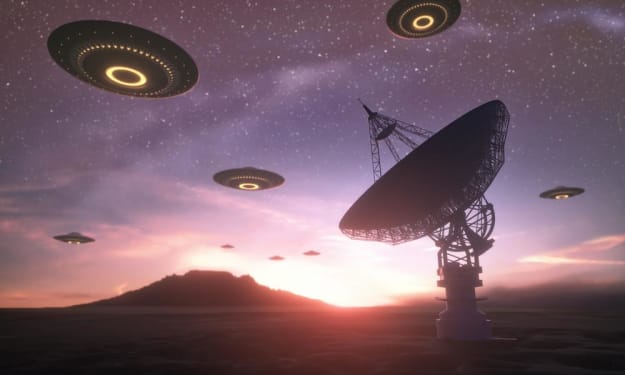
The Mariana Trench is the deepest known trench on Earth, with a depth of 11,034 meters. If the world's tallest mountain, Mount Everest, is put into it, then the summit of Mount Everest cannot even be exposed to the water.
For a long time in the past, the Marianas Trench is a no-go area for humans, until the last few hundred years, human science and technology to support human exploration of the world here.
How scary are 11,000 meters under the sea?
Many people will have a phobia of the deep sea because the deep sea is indeed very scary. We know that there is atmospheric pressure on the surface of the land, there is also pressure at the bottom of the sea, and the pressure at 11,000 meters in the deep sea is very strong, enough to crush humans.
The formula for the pressure of water is P = pf, where P is the pressure, p is the density of the liquid, g is the acceleration of gravity, and h is the height. According to calculations, we can know that the pressure of the Mariana Trench is about 1067 times the standard atmospheric pressure, which is equivalent to putting 17,000 tons of weight on the human body, where a fingertip bears the pressure of about 1.1 tons of weight.
In other words, if you dive into the depths of the Marianas Trench without any protection, then the strong pressure will crush the whole person, and no one can survive here.
In addition to the pressure, the bottom of the Marianas Trench can not receive light. According to our current analysis, sunlight can reach the ocean directly at about 200 meters, so we call the place where the sea depth is 200 meters shallow; the place where the sea depth is more than 200 meters is called the deep sea. The depth of the Mariana Trench already belongs to the ultra-deep sea, where there is no sunlight all year round, and plankton cannot carry out photosynthesis, and can only rely on the nutrient sink above the ocean, and the nutrients will be eaten by other organisms in the process of sinking, so the nutrients that can land at the Mariana Trench are very few, and because of this, almost no marine life can survive here, so the Mariana Trench The bottom of the Marianas Trench is so desolate that it is not an exaggeration to call it a "marine desert".
The temperature of the Mariana Trench is also very low, remaining at 2-4℃ all year round, and in some places where there are hot springs, the temperature here is very high, reaching 300-400℃, and accompanied by strong acids and alkali.
It is because the environment at 11,000 meters under the sea is unusually harsh, so some people call this place the "fourth pole", the other three poles are: the Arctic, Antarctica, and Everest.

Is there life in the Mariana Trench?
Marianas Trench can be considered one of the most hostile environments on earth, but there is a creature that can adapt to the harsh environment here, this fish is covered in white, with small eyes, and no fish scales. According to Dr. Jami's son, the scientist who conducted the study, this fish is not like anything we have seen before, nor is it like any creature we currently know, and is probably a new species.
They can survive here, and their physiology is related to the fact that their bones become very thin and easily bent. And the skin of the fish also becomes a very thin membrane, and the muscles and fibers become very pliable and fine, allowing them to live on the sea floor without being crushed by the water.
At the cold bottom of the sea, there are few creatures living in the Marianas Trench, but near the mouth of the submarine hot springs, there are very many creatures living here
Submarine hot spring mouths
A submarine hot spring is a geyser that erupts from the sea floor, similar to a volcanic geyser. Since the temperature here reaches 300-400 degrees Celsius, the water can exist in a supercritical state, and from a distance, the hot water spewing out looks like a chimney, so some people call them "white chimneys" or "black chimneys".
The environment at the mouth of the submarine hot springs is also very harsh, not only the temperature is very high, but also accompanied by strong acid and alkali. Originally scientists thought that this is a desolate place, but careful observation found that there are a very large number of living creatures living here.
According to the research, the reason why the creatures can survive here is that the process of continuous outward eruption of the hot spring mouth will make the hydrogen ions here happen directional movement, the directional movement of hydrogen ions can make some single-celled organisms get energy, thus building an ecological chain.
In other words, the ecological chain here is not built by solar energy, but by a submarine hot spring mouth. Based on this discovery, scientists also put forward the hypothesis that "life originated at the mouth of a hot spring on the sea floor", and believed that all life on Earth first lived here.
Conclusion
For living creatures on Earth, energy is essential for life to function. In the Marianas Trench, there is no light and not much nutrient deposition in the upper layers, resulting in a nutrient-poor seafloor. This, coupled with the lower temperatures and higher pressures, makes it difficult for organisms to survive here. Despite this, some hardy creatures have managed to survive here.
In the Marianas Trench, near the mouth of the hot spring, scientists have found another oasis of life, where life can use the energy of the hot spring mouth to achieve life activities, because of this, scientists put forward the "submarine hot spring mouth hypothesis".
About the Creator
Gross
Knowing what you know and knowing what you don't know is true knowledge.






Comments
There are no comments for this story
Be the first to respond and start the conversation.